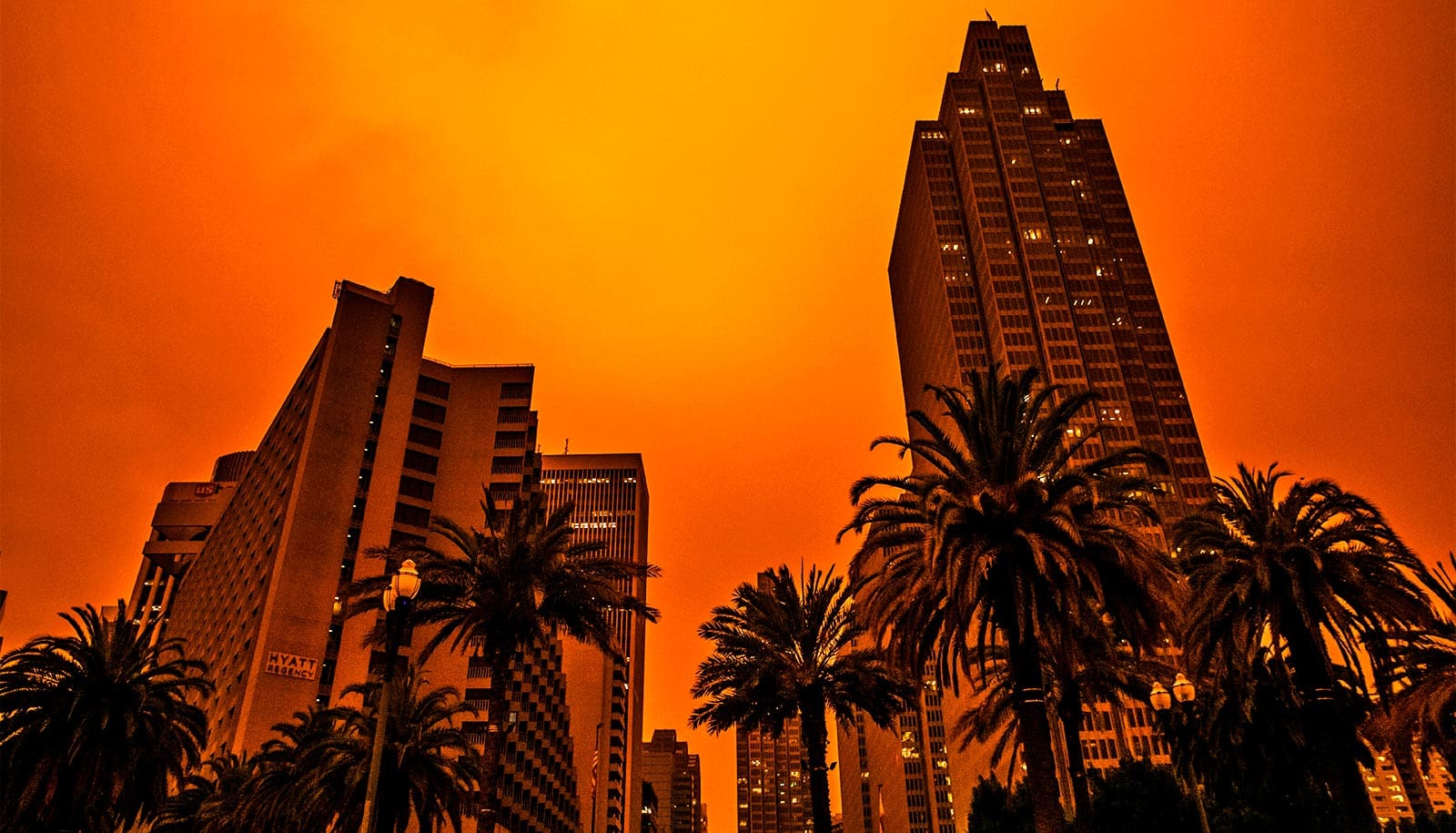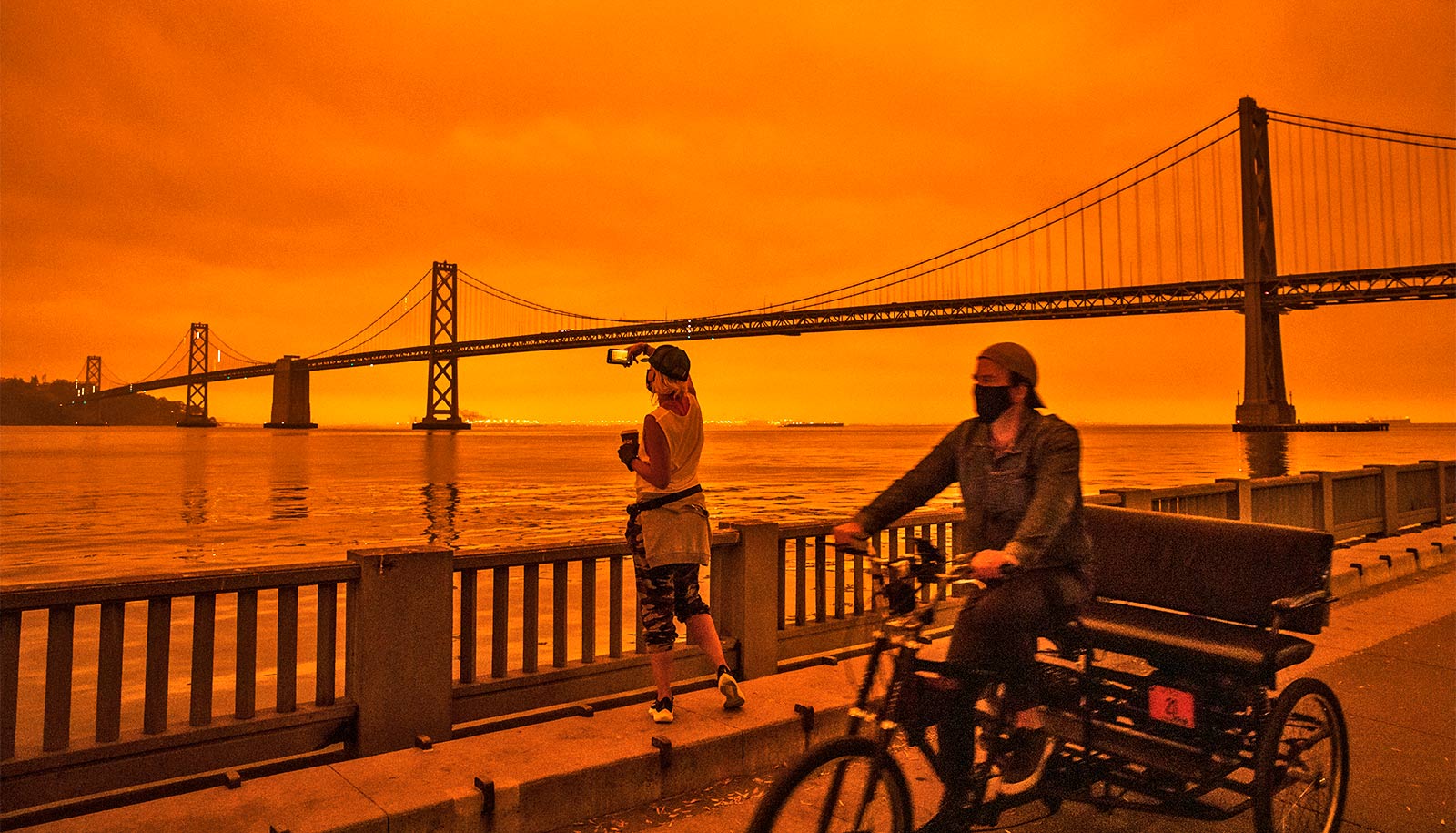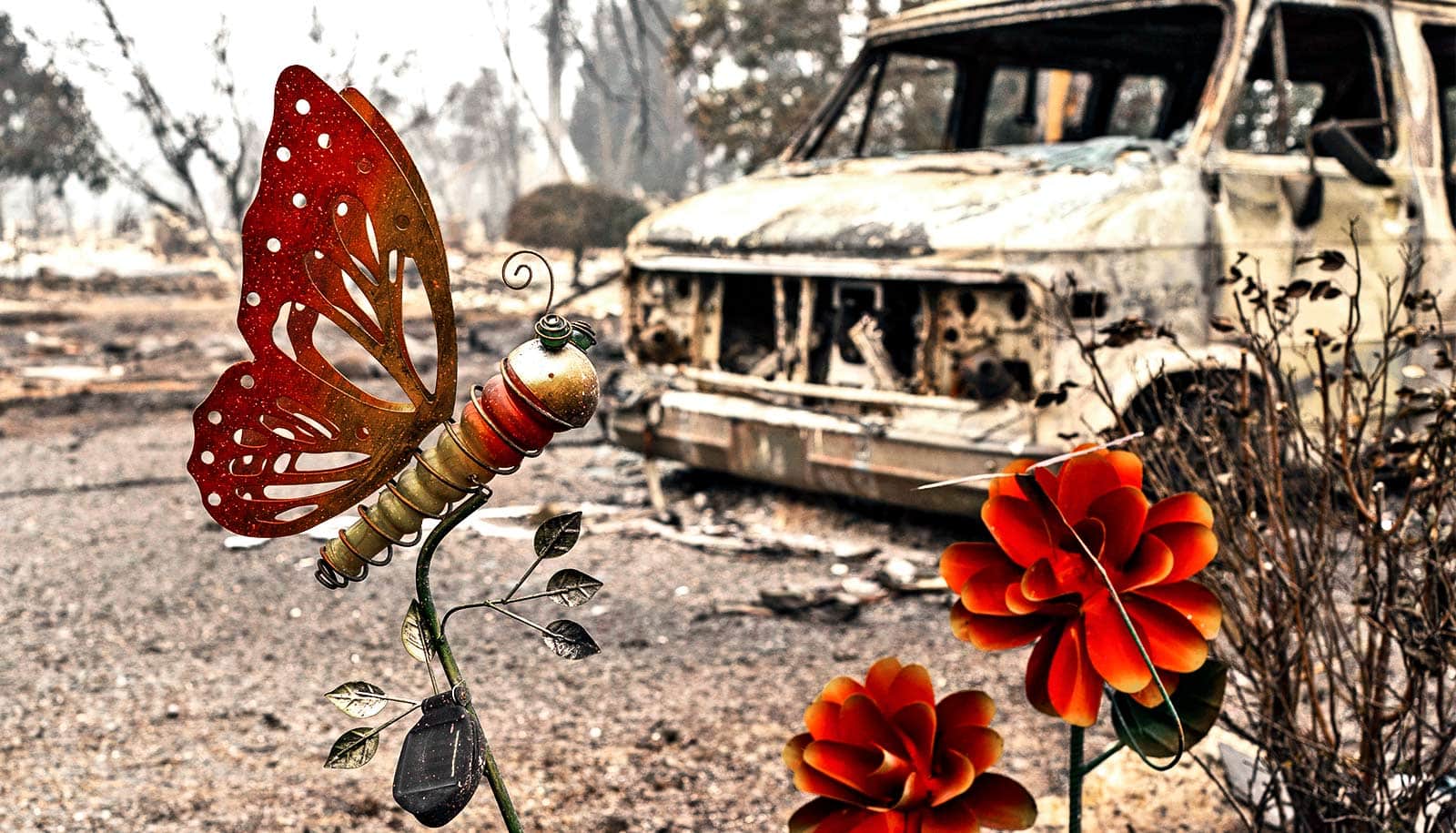The far-reaching effects of wildfires and wildfire smoke are no longer aberrations, researchers write in a new paper.
Record-setting wildfires torched huge swaths of western states in 2020. They blotted out the sun, produced hazardous air pollution in cities far from the blazes, and sent toxic smoke wafting clear across the country and beyond.
The number of homes at direct risk from wildfires—and the investment in firefighting resources to protect them—is on the rise. Nearly 50 million homes in the US now sit in the wildland-urban interface where houses are close to forests and highly combustible vegetation, according to the authors of the paper in the Proceedings of the National Academy of Sciences.
Moreover, being in close proximity to trees, brush, and wilderness is no longer a prerequisite for suffering impacts from wildfire. Marshall Burke, an associate professor of earth system science in Stanford University’s School of Earth, Energy & Environmental Sciences (Stanford Earth), and colleagues estimate that wildfires have accounted nationwide for a quarter of the toxic fine particle pollution known as PM2.5, up from 10% a decade ago, and up to half of that pollution in parts of the American West.
“Climate change is a primary driver of these changes,” says Burke, “and this particular climate impact is one we need to pay a lot more attention to.”
Here, Burke and coauthor Michael Wara, director of the Climate and Energy Policy Program at the Stanford Woods Institute for the Environment, discuss the growing risk and shifting burden of wildfires in the United States:
Rising sea levels, worsening droughts, more frequent hurricanes, and hotter temperatures are among the effects of climate change we often hear about affecting people. How does wildfire smoke compare to those threats?
Burke: For many people in the western US, increases in wildfire risk due to climate change are, along with the direct effect of extreme temperatures, going to be the main climate impact that people experience—much more than sea level rise or hurricanes. This is mainly due to the worsening air quality that most of the US—and particularly the western US—will likely experience as the climate warms and large fires become more frequent. This particular climate impact is one we need to pay a lot more attention to.
Wara: Wildfire smoke is different than rising sea levels or high temperatures because it is an impact caused by an interaction of climate change and human decision making. That means we can do a lot to make the problem better, by changing the decisions we have made about how to manage forests, where we build our homes, and how we build them. That leaves me optimistic about the prospects for better outcomes.
How and why is the societal burden of wildfire in the United States changing? How quickly is this shift occurring?
Burke: The societal burden of wildfire is growing for three main reasons. The first is a century of fire suppression—putting out fires as fast as we can—which has led to a build-up of unburnt fuel. The second is growing human encroachment into wildfire-prone areas and in particular a large increase in the construction of homes in the wildland-urban interface. The final and probably most important driver is climate change, which has dried out forests, killed trees, and made them much more flammable. Each of these trends has been decades in the making, but extreme heat and drought in recent years have greatly accelerated fire activity throughout the western US
Wara: Recent losses from wildfire have been totally unprecedented in California and the West. Major fires of a few decades ago seem almost quaint in comparison to the fire seasons of the last five years. Climate change is the proverbial straw that broke the camel’s back when it comes to wildfire. The factors that put the potential energy into the system that is now being unleashed include past genocide of native Americans and their cultural burning practices, fire suppression to maximize timber harvest, and suburban sprawl.
What are the unique challenges or unique advantages of addressing wildfire smoke through a federal policy like the Clean Air Act, which has lowered levels of six common pollutants in recent decades?
Burke: The Clean Air Act and its various updates have been remarkably successful in improving overall ambient air quality across the US, mainly by forcing counties with bad air quality to mitigate local sources of pollution. Wildfires, however, are not regulated under the Clean Air Act: A county can experience terrible air quality from a wildfire but not be in violation of federal air quality regulations. This is a big problem going forward, given that pollution from wildfire smoke constitutes a rapidly increasing share of total air pollution throughout much of the country. Furthermore, wildfire smoke also rarely stays local, often traveling hundreds or thousands of miles. This means the location of the fire can be quite distant from most of the people breathing the dirty air. Current air quality regulations are not equipped to deal with this problem.
Wara: One key point of our work is the growing burden of wildfire smoke as a component of fine particulate matter, which is the most deadly form of air pollution in the US Under current law, wildfire smoke is classified as an “exceptional event” that is essentially uncontrollable and so not subject to traditional air pollution control law. The reality is that wildfire is very much a managed outcome, but not in the same sense that a smokestack emitting air pollutants is. If we regulated wildfire as “just another air pollution source,” the effect would be to shut down all industry in areas impacted by smoke, which is unacceptable. In particular, fires are less predictable and controllable even if worse for our air quality. But resolving this dilemma is a key challenge for forest managers and air pollution regulators. And it is one they are increasingly grappling with. Some of the most promising solutions include greater use of prescribed burns, indigenous burning practices, and mechanical fuel treatments.
How do wildfires reflect or exacerbate issues of environmental justice?
Burke: The burden of wildfire is in many ways shared more broadly than other environmental harms. We find that minority and lower-income populations are if anything less exposed on average to wildfire smoke across the US than white and higher-income populations, at least in terms of outdoor smoke exposure. Other work by colleagues has shown that government expenditure on firefighting is not regressive, and tends to favor low-income, rural areas. But we need to worry about disparities in how outdoor smoke gets inside homes, and how different groups are able to protect themselves from smoke exposure. This is an active area of research with clear environmental justice implications.
Wara: Wildfire smoke impacts a broad swath of the population. It does not discriminate rich from poor. Or by race. But acute conditions associated with smoke exposure appear to be disproportionately evident in subpopulations that have preexisting conditions due to other air pollution-related exposure. For example, low-income kids in the southern San Joaquin Valley have very high asthma rates due to chronic poor air quality. When a wildfire event occurs, like the Creek Fire in the southern Sierra, preliminary evidence suggests they are disproportionately likely to end up in the ER because of their preexisting condition.
How accurately can wildfire activity be linked to air pollution and health impacts in population centers far from fires that burn in the western US, or even beyond national borders?
Burke: Scientists are beginning to get a clearer picture of how wildfire activity contributes to local and distant air pollution, and how these changes in pollution affect a range of health outcomes. Again, the basic picture is not great: Wildfire smoke travels long distances and often across borders, it contributes substantially to air pollution, and it likely worsens a broad range of health outcomes. However, we still have an incomplete understanding of how changes in outdoor wildfire smoke affects indoor air quality, which is important since Americans spend roughly 90% of their time indoors, and some people live in much draftier homes than others. We also don’t have great data on what risk-reducing interventions make the most sense on a personal or societal level. Does it help to wear masks? How much do indoor filters help? How much prescribed burning should be done and where? Our group and many others are now focused on trying to better answer these questions.
Wara: We need to do much more work to understand how acute and chronic exposure to wildfire smoke leads to health outcomes. The reality is that the levels of fine particulates experienced during high smoke events far exceed those seen in other contexts in the US, and more closely resemble urban India and China. They are outside of the dose-response calibration for US air pollution. How these extremely elevated ambient concentrations of hazardous air pollutants translate to exposures and health outcomes in the context of the United States is an area of developing science.
The research received funding from the Robert Wood Johnson Foundation, the William, and Flora Hewlett Foundation, and the National Science Foundation.
Source: Stanford University



